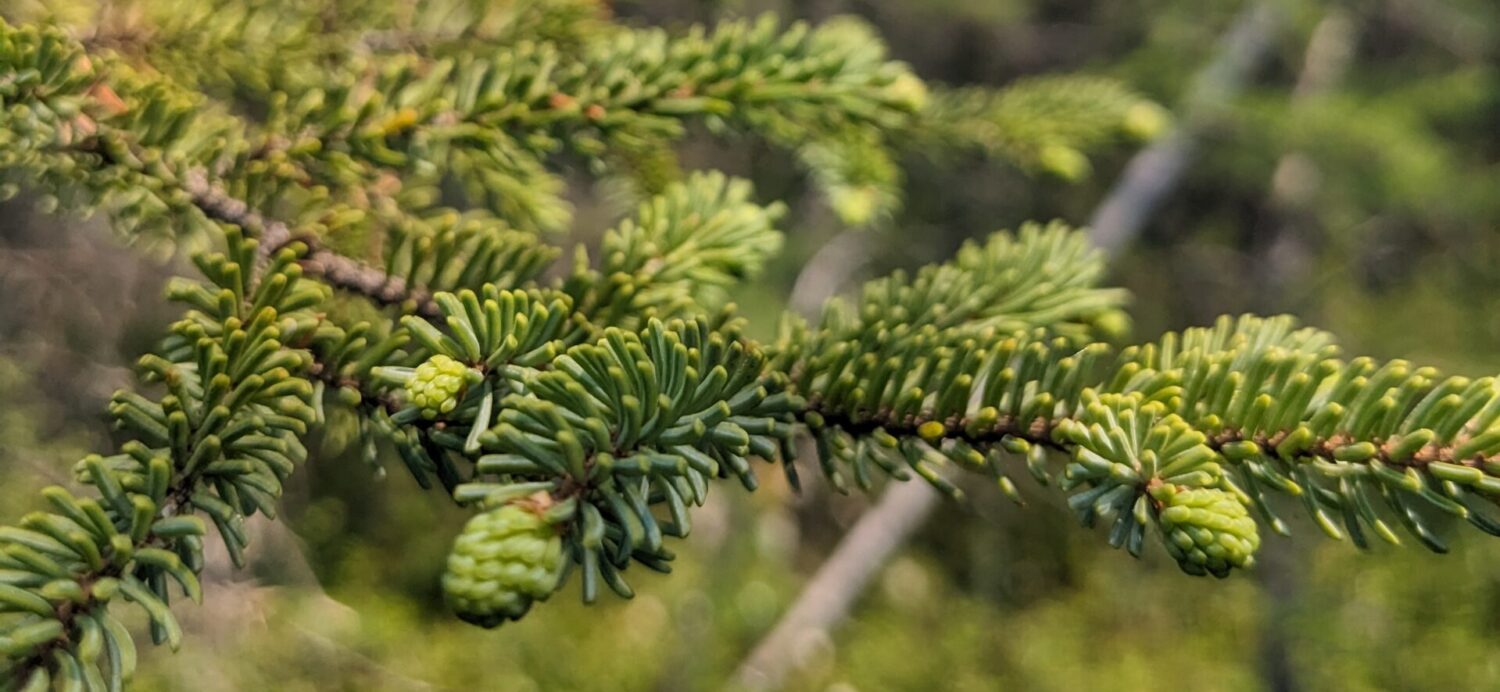Old growth trees are typically rare, especially in southern Appalachia. However, it is possible to come across some old growth refugia that have survived for more than 100 years. So, as a forester, what are some of the main characteristics I look for when identifying old growth trees? That’s what I’ll being sharing today.
Occasionally, I conduct forest inventory projects for the Forest Service that call for the identification of old growth trees. There are a few characteristics I look for to quickly determine which trees are indeed old growth. For the context of this article, and for the Forest Service inventories I conduct, the age threshold assigned to old growth trees is slightly different depending on the species. For example, an old growth white oak is usually greater than 120 years old. Some pine species may be considered old growth after 80 years, because they tend to have shorter lifespans. These ages are used to estimate the development of particular physical characteristics. So, what’s the first thing I look for?
Old Growth Stems
When you come across a tree that has a diameter greater than 30 inches, you notice it. The size of the stem is the first thing I look for when identifying old growth trees. That’s not to say that a tree must be over 30 inches to be considered old growth, though. Typically, if the size of the stem stands out from the surrounding trees, or if the height of the tree is emergent above the canopy of other trees, this may be an indicator that you are looking at an old growth tree.

Large hollows in the stem indicate old growth as well. In winter one year in the Chattahoochee National Forest I happened to look up as I was walking out of the forest and caught a glimpse of a black bear sticking its head out of a large tree hollow to get a whiff of me, before ducking back into its hole. This hole was about 20 feet off the ground and half the size of a front door. When I visited again the next day, I could see large bear prints leading up to the tree and long claw marks around the opening of the hollow.
Old Growth Limbs
Are the limbs large and gnarly? If so, it may be an old tree. White oaks and chestnut oaks are known to develop large twisted branches as they age. Sometimes these branches can be over 20 inches in diameter, big enough to be a substantial tree on their own. Old growth white pine will often have large dead branches along their lower stem. These branches will usually shed with time in a process called self-pruning.
If there are large dead branches that have fallen off of the tree, this is another sign of age. Also, look up the stem of the tree and see if there are any large scars from branches that have fallen off. It would have taken many years for a large branch to develop, so if it has fallen to the ground, you can be sure it is an old branch. This is especially true if the fallen limb has substantial amounts of moss or fungi growing on it.
Old Growth Canopy Structure
Another quick way to determine whether a tree is old growth is to look at the canopy. The chestnut oak will develop a wide, spreading canopy that becomes almost flat on top. Some trees, like the American beech, will spread out its long horizontal branches, creating a wide canopy. These wide canopies will often shade out competition and prevent other saplings from establishing under them.
In forestry, there are trees known as wolf trees, so called because their canopies do not allow other plants to establish in their vicinity. They also have large twisted branches that sometimes extend all the way down their stem, making them less than ideal for timber (many branches in the wood means many knots). Wolf trees are often remnants from livestock pastures that have developed into forests over many years of abandonment.
Old growth trees can be easy to spot once you know what to look for. Though this list is not exhaustive and estimating age from physical attributes is largely subjective, it covers some of the key characteristics I look at when determining old growth trees. What other characteristics can you thing of that define old growth trees in your area?


1 thought on “How A Forester Identifies Old Growth Trees”